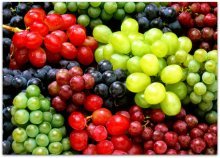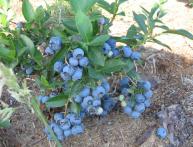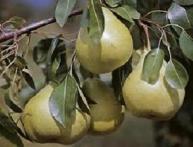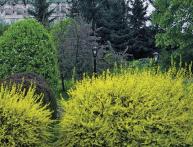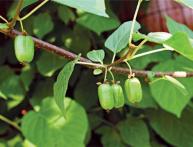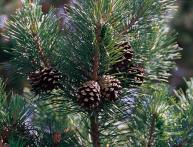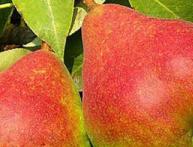Promising grape varieties for amateur viticulture
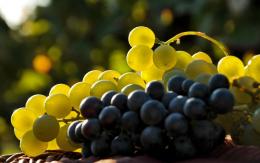
The history of growing cultivated grapes goes back several thousand years. There is a hypothesis that already 40 thousand years ago, ancient man was familiar with this culture and the technology for making grape wine. Today the assortment includes hundreds, if not thousands of varieties and stable hybrid forms of grapes. In amateur viticulture, incorrectly selected variety may mean wasted time, a useless investment of effort and money in growing a plant that did not meet the grower’s expectations and did not produce a harvest of the desired quality.
And although the choice of variety depends on personal preferences, we will try to consider some promising grape varieties for the amateur garden. There are varieties suitable for fresh consumption. These are table varieties. Technical varieties are called varieties from which wine is made. Let's start the review with technical varieties that are promising for cultivation by amateur winegrowers.
Content:
- Promising technical grape varieties
- List of promising early grape varieties
- Medium grape varieties for amateur viticulture
- Mid-late and late varieties promising grape varieties
Promising technical grape varieties
Technical varieties are grown for the production of wine and juice. Although many of them are suitable for fresh consumption. The following varieties and hybrids can be recommended for growing on your own plot:
- Harmony
- Captor
- Rondo
- Friendship
- Philip
Technical grape variety Plenitel
A technical variety of American selection. The parent forms for the variety were Herbert and Miladel. Medium grade varieties maturation. The harvest can be harvested in the first ten days of September. The brushes are large enough for a technical grade, the weight of individual brushes is 250 g. The berries weigh up to 2 g. The color of the berries is blue, dark, with a blue tinge. The skin is dense. The pulp and juice are colored a rich burgundy color. The taste is harmonious with strawberry notes. The advantages of the variety include increased resistance:
- to fungal infections
- to cracking and damage by wasps
- to low temperatures, winters at - 29
- early ripening, bears fruit from the second year
The variety can be recommended for the production of homemade wine; it is also good for producing fresh and canned juices, and homemade compotes. Also, due to the frost resistance of the root system, it can be a rootstock for other varieties. If the grapes are not going to be used for homemade wines, then it is better to grow table varieties.
List of promising early grape varieties
When choosing a variety, you first need to focus on:
- taste qualities
- size of berries and brushes
- disease tolerance
- productivity
For selection grapes For amateur cultivation, we will consider varieties that meet the above requirements, depending on the ripening period and purpose.
Very early and early varieties
Varieties from this group are very beneficial for amateur cultivation. The growing season for such varieties and hybrid forms is quite short. Very early varieties begin to ripen 95 days after bud break, and early varieties - after 115 days.In such a short period, the berry manages to absorb the maximum sunny color, even where the summer is short and the number of warm days is not very large. From this group, the following varieties can be recommended:
- Ruslan
- Arcadia
- Melting
- Alexa early
- First-Called
- Buffet
- Abu Hasan
Grapes Arcadia
The best early variety. Obtained in Ukraine on the basis of the parent varieties Moldova and Cardinal. Arcadia combines the best features of her parent couple. From the Moldova variety she got disease resistance, pests and weather conditions. Arcadia took high quality berries from the Cardinal variety. Very early ripening variety. Medium-sized clusters weigh 500.0 - 700.0 g. Large clusters weigh up to 2.0 kg.
The berry is large, weighing up to 15 g, oval, whitish-green in color with a slight amber blush. The skin is durable, although not rough or thick. The pulp is fleshy and quite juicy. The low sugar content, up to 16%, is compensated by the low acid content, from 4 to 6 g/l.

The taste is harmonious, light, with nutmeg notes. The bushes are predominantly of medium height, although they can be vigorous. As a disadvantage, one can note that it is not very frost-resistant; it can withstand temperatures as low as -21. Also when over-watered soil part of the crop is susceptible to cracking.
Medium grape varieties for amateur viticulture
This group includes varieties and hybrid forms that ripen in 135-145 days. The most promising varieties include:
- Anyuta
- Verona
- Anapa giant
- Black Grand
- Kesha red
Grapes Anyuta
Average grade. The clusters are medium and large, from 700.0 to 1200 g. The parent forms were the varieties Talisman and Kishmish radiant. The author of the variety is Krainov V.N.The berries are rich pink in color, large, weighing up to 14 g, oval in shape. The pulp is juicy, the skin is dense. The bushes are tall, can easily overcome a support of 3 m, and are productive. Harvest rationing is mandatory.
The advantages of the variety include the ability to bear fruit even with significant errors in care. The plant can withstand winter frosts down to - 23 degrees. The disadvantage of the variety is the predisposition of the berries to cracking and the presence of small but noticeable seeds in them. If the harvest is not harvested on time, the berries remain on the vine, but their taste and texture deteriorate.
Mid-late and late varieties promising grape varieties
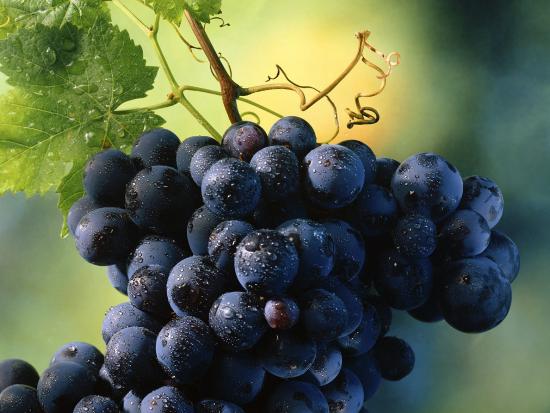
Mid-late varieties produce a harvest after 145 days, and late varieties - after 155 days after the first buds open. Such varieties are advisable grow where there are a large number of warm and sunny days in the autumn. Here we can recommend the following varieties as promising for cultivation:
- September
- Moldova
- Skorensky red
- Ruby seedlis
- Courage
Grape variety Skorensky red
Late variety. The harvest can be harvested 160 days after the buds open. The variety is a Moldovan selection and it is advisable to recommend it for cultivation in regions where autumn is long and warm. The parental forms are the varieties Nimrang, Pocket, Datier de Saint Vallier. The brushes of this variety are medium and large, weighing up to 700 g. The weight of one berry is up to 9 g. The color is red-violet. By the time the berries are fully ripe, the clusters close together very tightly.
The taste is harmonious. Sugar content up to 17%, acid content up to 6 - 9 g/l. The advantages of the variety include resistance to cracking even after heavy autumn rains. Resistant to fungal infections, withstands frosts down to -24 degrees.
As a disadvantage, we can note the presence of a small amount of green berries in a fully ripe cluster. In all other respects, the variety is one of the most promising late varieties. New ones are currently offered every year. hybrid forms of grapes of both domestic and foreign selection. Each lover can choose a variety according to their needs and taste.
Video about the Moldova grape variety:

